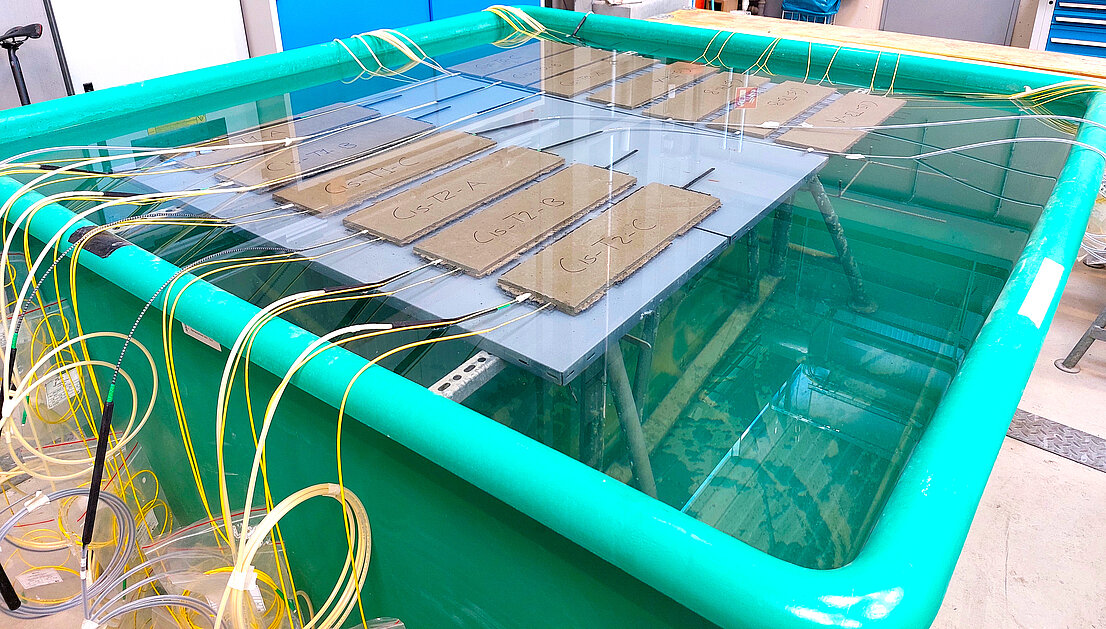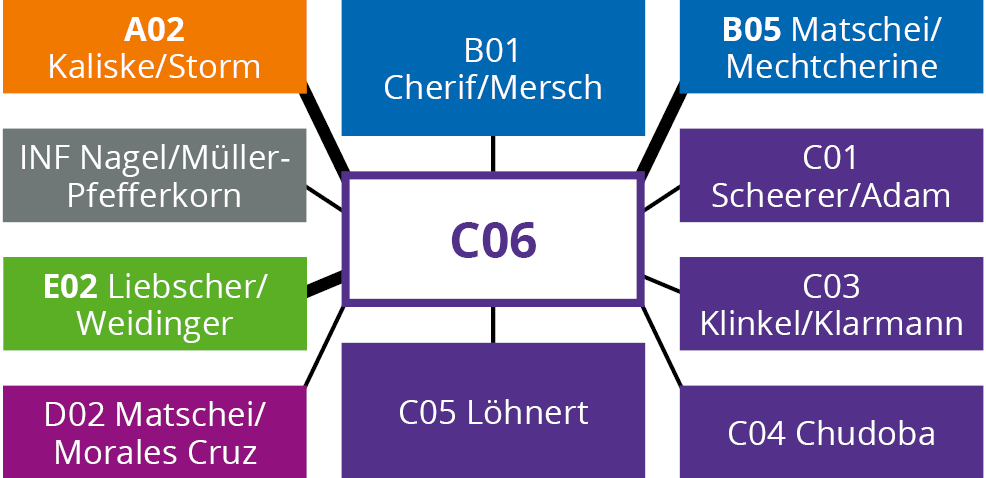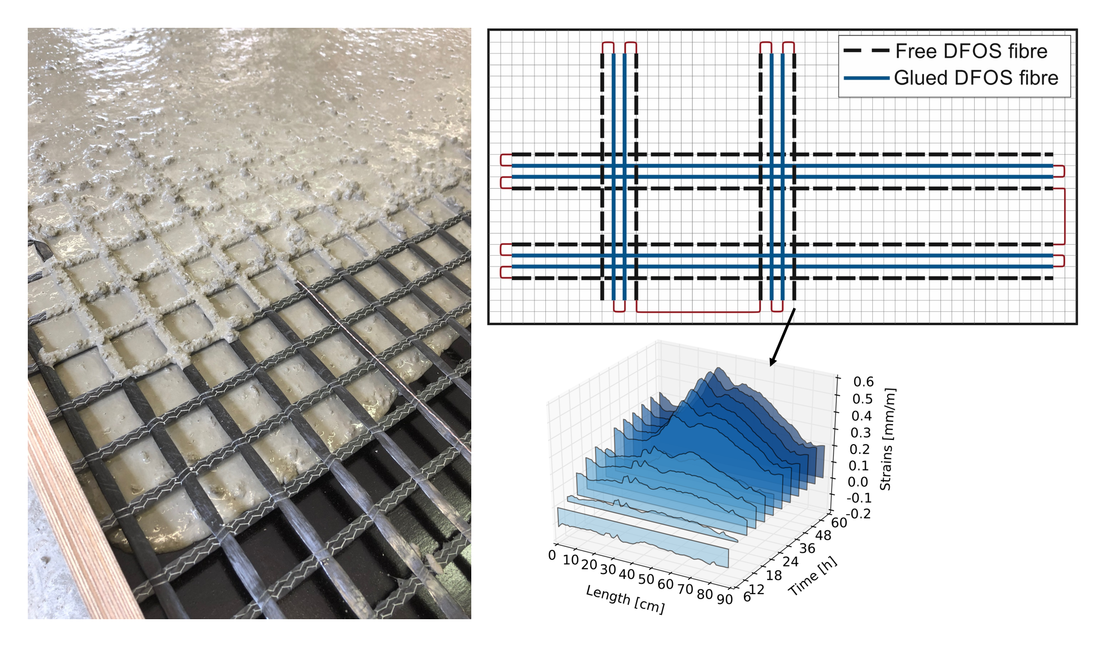Chemical prestressing of folded and shell shaped carbon concrete structures | Funding Period 2
This project aims to enhance the structural performance of folded and shell-shaped carbon-reinforced concrete structures using the chemical prestressing technology. During the first period of TRR 280, significant advancements were achieved in developing the chemical prestressing technology. However, it was observed that long periods of underwater curing are required to achieve the full expansion of the concrete. This is considered unpractical in a construction site or even in a prefabrication factory. Therefore, the second phase of this project will focus on developing rapid curing techniques to expedite the expansion process of concrete and study their influence on the structural behavior of chemically prestressed carbon-reinforced concrete structures.

Scientists

D-01062 Dresden (Germany)
![M.Sc. Mohammed Karem Dhahir [Translate to English:]](/fileadmin/_processed_/3/9/csm_C_dhahir_quadratisch_0ac87dd4f6.jpg)
D-01062 Dresden (Germany)
![M.Eng. Jasmin Dräger [Translate to English:]](/fileadmin/_processed_/7/6/csm_2025_c06_dr%C3%A4ger_3ee28f6163.jpg)
01062 Dresden (Germany)
Cooperations

Ehemalige | Former involved
Katarzyna Zdanowicz (TU Dresden, 06–12/2020)
Chemical Prestressing of folded and shell-type carbon-concrete structures | Funding Period 1
The objective of the project C06 is to develop methods for the chemical prestressing of shell-type and folded carbon-reinforced concrete structures designed in projects C01 and C04. This will be achieved by design of suitable material combinations in cooperation with projects D01 and D02 and by investigating the potential of chemical prestressing using continuous strain measurements under controlled boundary conditions. The inner structure of chemically prestressed carbon-reinforced concrete elements will be analysed and influences at the cross-sectional level, such as orthotropy, curvatures and interlocks, will be determined.
Based on the results of these analyses, the chemically prestressed shell and folded CRC structures will be produced and investigated in the loading tests as well as during long-term measurements.

Publikationen | Publications
Dhahir, M. K.; Neef, T.; Mechtcherine, V.; Marx, S. (2025) Chemical prestressing of concrete thin plates reinforced with mineral-impregnated carbon fibre (MCF) composites in: Engineering Structures 317, 118651 - DOI: https://doi.org/10.1016/j.engstruct.2024.118651
Dhahir, M. K.; Beckmann, B.; Marx, S. (2024) Utilizing the Distributed Fiber Optic Sensor (DFOS) Technology for Monitoring the Long-Term Behavior and Structural Performance of Carbon-Reinforced Concrete in: Mechtcherine, V.; Signorini, C.; Junger, D. [eds.]: Transforming Construction: Advances in Fiber Reinforced Concrete – Proc. of XI RILEM-fib Int. Symp. on Fiber Reinforced Concrete (BEFIB 2024), 15.–18.09.2024 in Dresden, publ. in RILEM Bookseries, Vol. 54, Cham: Springer Nature Switzerland, p. 713–720 – https://doi.org/10.1007/978-3-031-70145-0_85
Dhahir, M.; Marx, S. (2023) Development of expansive concrete for chemical prestressing applications in: Case Studies in Construction Materials 19, e02611 – DOI: 10.1016/j.cscm.2023.e02611
Dhahir, M.; Marx, S.; Zdanowicz, K. (2023) Chemical prestressing of concrete structures; state of the art review in Structural Concrete 25, issue 2, p. 1450–1464 – DOI: 10.1002/suco.202300330
Dhahir, M.; Neef, T.; Mechtcherine, V.; Marx, S. (2024) Chemical prestressing of concrete thin plates reinforced with mineral-impregnated carbon fibre (MCF) composites in: Engineering Structures 317, 118651 – DOI: 10.1016/j.engstruct.2024.118651
Dhahir, M. K.; Kalthoff, M.; Neef, T.; Friese, D.; Beckmann, B.; Cherif, Ch. Matschei, T.; Mechtcherine, V.; Marx, S. (2023) Developing the Chemical Prestressing Technology for Textile Carbon Reinforced Concrete in: Ilki, A.; Çavunt, D.; Çavunt, Y. S. [eds.] Building for the Future: Durable, Sustainable, Resilient – Proc. of fib Symposium 2023, 05.–07.06.2023 in Istanbul (Turkey), publ. in: Lecture Notes in Civil Engineering 350, Cham: Springer, p. 1428–1438 – DOI: 10.1007/978-3-031-32511-3_146
Giese, J.; Herbers, M.; Liebold, F.; Wagner, F.; Grzesiak, S.; de Sousa, C.; Pahn, M.; Maas, H.-G.; Marx, S.; Curbach, M.; Beckmann, B. (2023) Investigation of the Crack Behavior of CRC Using 4D Computed Tomography, Photogrammetry, and Fiber Optic Sensing in Buildings 13, issue 10, 2595 – DOI: https://doi.org/10.3390/buildings13102595
Liebold, F.; Bergmann, S.; Bosbach, S.; Adam, V.; Marx, S.; Claßen, M.; Hegger, J.; Maas, H.-G. (2023) Photogrammetric Image Sequence Analysis for Deformation Measurement and Crack Detection Applied to a Shear Test on a Carbon Reinforced Concrete Member in: Ilki, A.; Çavunt, D.; Çavunt, Y. S. [eds.] Building for the Future: Durable, Sustainable, Resilient – Proc. of fib Symposium 2023, 05.–07.06.2023 in Istanbul (Turkey), publ. in: Lecture Notes in Civil Engineering 350, Cham: Springer, p. 1273–1282 – DOI: 10.1007/978-3-031-32511-3_130
Liebold, F.; Wagner, F.; Giese, J.; Grzesiak, S.; de Sousa, C.; Beckmann, B.; Pahn, M.; Marx, S.; Curbach, M.; Maas, H.-G. (2023) Damage Analysis and Quality Control of Carbon-Reinforced Concrete Beams Based on In Situ Computed Tomography Tests in Buildings 13, issue 10, 2669 – DOI: https://doi.org/10.3390/buildings13102669
Zdanowicz, K.; Vakaliuk, I.; Beckmann, B.; Marx, S. (2022) Two-dimensional strain measurements of chemically prestressed textile reinforced concrete slabs with distributed fibre optic sensors in: Stokkeland, S.; Braarud, H. C. [eds.] Concrete Innovation for Sustainability – Proc. for the 6th fib International Congress 2022, 12.–16.06.2022 in Oslo (Norway), Oslo: Novus Press, p. 666–674.




